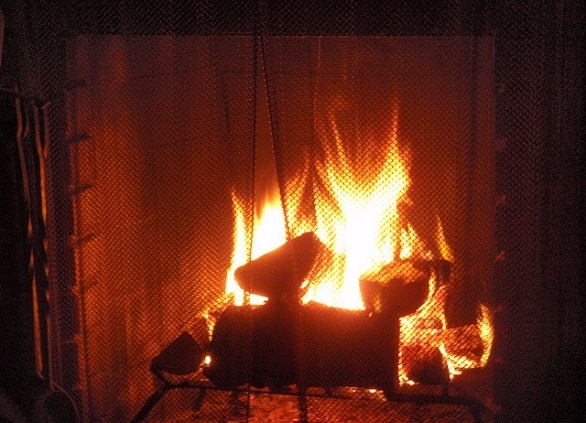6 Ways to Improve Your Fireplace
6 Ways to Improve Your Fireplace
Wood is a renewable resource and burning it to heat your home in the winter is a time honored tradition that has been practiced for centuries. The relaxing ambience created by a fireplace during the colder months is something people seem to enjoy innately. However, antiquated heating systems used technology that, although provide the ambiance, release an unsafe amount of pollutants and air particulates into the air. In recent decades, technological advances have allowed for safer, more efficient ways to heat buildings and while enjoying the warmth and glow of natural fire.
Traditional Fireplaces
Open-faced, radiant, wood burning fireplaces with a chimney are unfortunately a very inefficient way to heat a home or building. Fire cannot burn without oxygen and in traditional fireplaces, the chimney absorbs air from inside the home, heats it, releases it up through the chimney, and replaces the warm air from inside the building with cooler air from outside. Traditional, open face fireplaces like this are considered inefficient because they simply don’t do a very good job at heating a home, unless you’re standing right next to the fireplace.
However, there are ways to make traditional fireplaces more efficient and safe.
- Consider upgrading to a circulating fireplace. These units are installed with a blower system and are designed to circulate the warm air from fire back into a room.
- Add doors. The doors will hold the heat in the fireplace, allowing it to radiate inside the home. Doors will also redirect the pollutants in the smoke from the fire to the chimney so the air inside your home remains pollutant free.
- Check the damper. Leaving the damper open without a fire going will make your home cooler. If the damper is warped, then even when it’s closed it could continue to let warm air escape from the house.
- Use a cast iron grate. Cast iron grates will absorb the most heat so it can radiate it back into the room. Some newer models include blowers that will redirect the heat from the fireplace toward the room, which add a significant amount of heat to a room.
- Get a fireback. Using a metal plate to line the back of the fireplace will radiate heat toward the room when the fire starts to die.
- Consider an insert. Inserts are enclosed boxes that use electricity, gas, or wood pellets and are designed to fit inside of your existing fireplace. Although this option is the most expensive, modern inserts are very efficient and will add a substantial amount of heat to your home.
Safety
Additionally, open face fireplaces without doors make it easy for smoke and air pollutants to enter the main living area of a building. Inhaling these particulates over a long period of time could degrade the air quality inside of a home and cause health problems. A good rule of thumb is, that if you can smell the smoke, you’re inhaling it and other harmful particulates, and is a good indicator that your fireplace should be upgraded.








